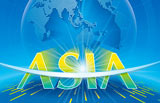Damaged 'coins' from China nickel-and-dime US Mint: authorities
Updated: 2015-04-02 11:06
By William Hennelly(China Daily USA)
|
||||||||
Most people probably could find a buck or two in change if they look under their car seats, but $900?
That's the average amount in coins - later redeemed for cash from the US Mint - that US prosecutors say would have had to be found in each scrapped vehicle exported to China that purportedly contained loose change.
The "change" found in those cars was then sent back to China-connected companies in the US that redeemed the coins for payment.
In a March 20 District Court filing by the US Attorney's Office in New Jersey, the government is seeking the forfeiture of $5.46 million in proceeds seized from three US-based companies involved in sending damaged coins to the Mint for payment.
The government argues that they were counterfeit and altered so that they would be eligible for payment under the Mint's 104-year-old mutilated coin program, which pays a little under $20 a pound for such coins.
Mutilated coins are those that are "chipped, fused, discolored, burned, or distorted and not machine-countable", according to the Mint.
The coins collected are melted down, with the yield being used as metal for new coins.
The coins from China were almost entirely dimes, quarters and half dollars. Any coins minted in the US in those denominations are made of only copper and nickel.
The China coins contained aluminum and silicon, argued the US attorney, and lower amounts of copper and nickel than the US Mint uses.
Of the $5.46 million seized was: $2.84 million previously due and payable by the Mint to America Naha, Inc; $2.34 million to Wealthy Max Ltd; and $219,492 to XRacer Sports Co Ltd.
According to the complaint, at the center of the alleged scheme is a company in New Brunswick, New Jersey. Xu Qianru is the registered owner of Guang Han Recycling Company Ltd, which is based in Guangdong, China.
Guang Han Recycling exported mutilated coins from China to the US. Xu also owns Guang Han Trading LLC in New Brunswick.
Guang Han Trading imports mutilated coins from China into the US. Xu also has imported coins into the US through a company called Dragon Form USA.
US Homeland Security Investigations (HSI) learned that Xu's associates supplied Wealthy Max with counterfeit mutilated coins, which it sent to the Mint for redemption, the US attorney's office said.
America Naha handles Dragon Form's importation of coins. Xu's people supplied XRacer Sports with counterfeit mutilated coins, which it also submitted, the complaint said.
The US is also seeking the seizure of land in Dallas on which one of the recycling companies operated, along with a Porsche Cayenne valued at $81, 000.
No criminal charges have been filed in the case.
A 2009 analysis by the US Customs Bureau and the US Treasury's Office of the Inspector General compared the number of cars exported to China against the number of damaged coins imported from China, the filing said.
"There would have to be approximately $900 in coins in every vehicle ever exported to China as scrap metal in order to account for the total amount of waste coins imported from China for redemption," Assistant US Attorney Lakshmi Srinivasan Herman wrote in the complaint.
"Interestingly, United States Mint personnel also believe that more half dollars have been redeemed by China-sourced vendors in the last 10 years than the United States Mint has ever manufactured in its history," Herman wrote.
The complaint says that in order to keep up with the increase in volume, the Mint began scheduling quarterly melts at the foundries.
The melts previously had been scheduled much less frequently.
In October 2009, US Customs and Border Protection noted a rise in waste-coin imports at the Port of Los Angeles.
A number of importers claimed that the coins were taken from cars exported from the US to China as scrap metal.
HSI agents in field interviews at an auto salvage yard, a scrap metal recycler and a metal recycling and export facility found that anything of value (coins, gasoline, oils/fluids, etc.) is typically removed from vehicles at the start of the salvage process.
By the time a vehicle is crushed for export, there is nothing left except ferrous metals and other material of little value, such as plastic and glass.
The coins recovered usually yield only a few hundred dollars a month.
Dimes, quarters and half dollars are more likely than pennies and nickels to be counterfeited and presented for redemption because their face value is much higher than the total manufacturing cost.
None of the shipments from the Chinese importers have ever contained pennies, and only small parts of a few shipments have contained nickels.
The die striking machinery the Mint uses to manufacture its coins is commercially available. Old die striking machines used by the Mint were sold as scrap metal to a Chinese company, the filing said.
The Mint declined to comment on the program and referred calls about the coin case to the US attorney's office.
Contact the writer at williamhennelly@chinadailyusa.com
(China Daily USA 04/02/2015 page2)

 US returns ancient Royal Seal of King Deokjong to S. Korea
US returns ancient Royal Seal of King Deokjong to S. Korea
 'Tomb-sweeping services'
'Tomb-sweeping services'
 Top 5 features of China's property market
Top 5 features of China's property market
 Magnificent scene: buildings amid heavy fog in Shanghai
Magnificent scene: buildings amid heavy fog in Shanghai
 6 cultural differences between China and the US
6 cultural differences between China and the US
 Mother illustrates her pregnancy
Mother illustrates her pregnancy
 In memory of movie star Leslie Cheung
In memory of movie star Leslie Cheung
 Top 10 best employers in China in 2015
Top 10 best employers in China in 2015
Most Viewed
Editor's Picks

|

|

|

|

|

|
Today's Top News
54 dead after Russian trawler sinks in ocean
China rips Japan's draft policy report
China can better protect nationals abroad
US 'miscalculated' on AIIB: Albright
PMI indicates that factories are expanding again
Chinese woman charged with fraud remains in US jail
46 countries apply to AIIB
Tales of a nomad
US Weekly

|

|





